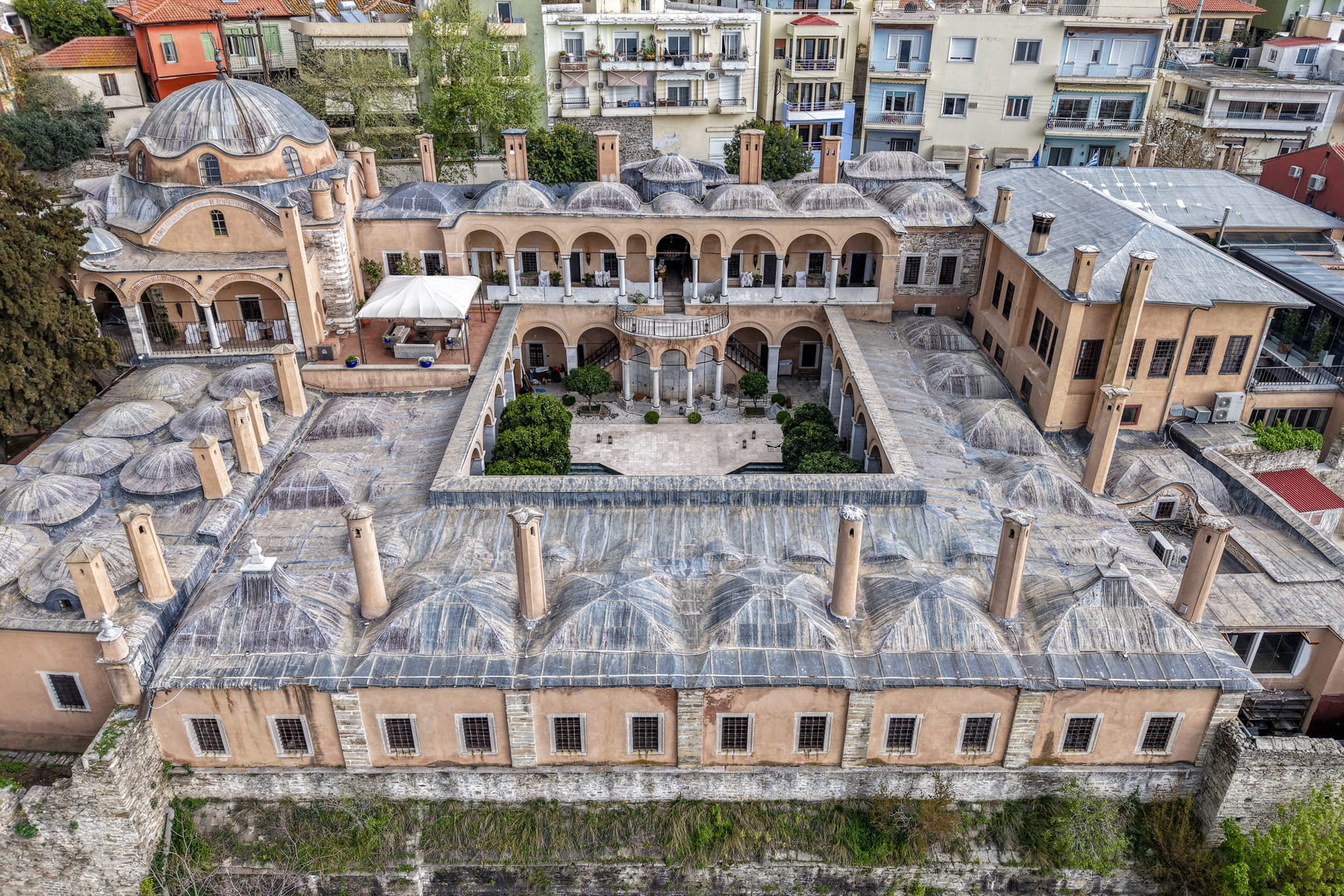
Preserving the Imaret of Kavala: Safeguarding an Ottoman Landmark
Preservation efforts have protected the historical design and cultural legacy of the Ali Pasha-gifted Imaret of Kavala—one of most important Ottoman landmarks in Greece.
6 min
Written by Ian Bancroft Photographed by Armin Durgut
Over the lead-coated domed roofs, between the equidistant chimneys, the forested island of Thasos sits on the horizon. At the back stand white columns from a former temple, on which symmetrical arches rest. Below is one of three Islamic gardens, pruned and purposeful.
This is the Imaret complex bequeathed to Kavala, an Aegean port town in northern Greece, in the 19th century by the Ottoman viceroy Mohammed Ali Pasha (also known as MehmedAli Paşa). Arguably the town’s most famous son, he rose through the ranks of the empire to become widely considered the founder of modern Egypt.
Once housing religious schools, student dormitories, a community soup kitchen and more, the complex was at risk of falling into ruin—until one woman’s yearslong preservation efforts led to the transformation of the late Ottoman architectural gem into a five-star hotel with 27 exquisite rooms. Restored to its former glory, the Imaret now inspires the town to rediscover and nurture the influences of the past.
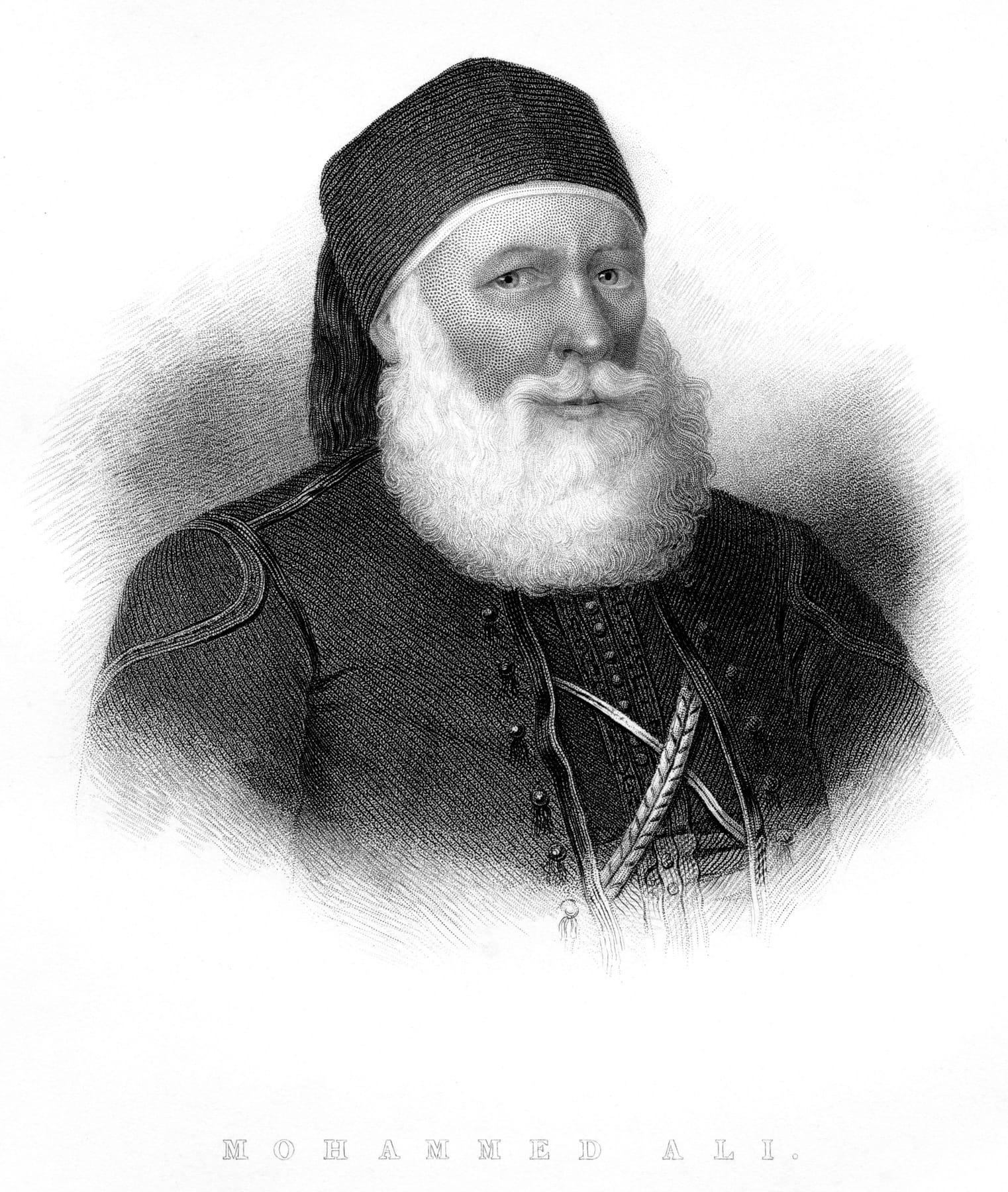
Mohammed Ali Pasha, widely considered the founder of modern Egypt, bequeathed the Imaret to his hometown of Kavala, Greece.
Imaret: Greece’s Islamic heritage
Constructed in the Old Town on the Panagia peninsula, with its maze of cobbled streets within the remnants of the Byzantine fortress walls, Imaret is a shining example of Ottoman Baroque, with curved forms replacing geometric patterns. The monument is one of many Islamic heritage sites in Greece stemming from nearly 400 years of Ottoman rule after the end of the Byzantine Empire. But after years of neglect, parts were at risk of collapse, so Kavala native Anna Missirian Tzouma stepped in.
Missirian Tzouma says that Ottoman heritage remains “misresearched” and that there is no joint interreligious and cross-cultural approach to how we view history in the region. So, almost two decades ago, she created a research center, Motivation of Heritage Affinities (MOHA), committed to facilitating understanding about the contribution of the Islamic world in scientific, cultural and artistic domains. Today Missirian Tzouma, along with her colleagues in the field, is not only determined to safeguard the historical heritage of Kavala but to create a lasting cross-cultural dialogue.
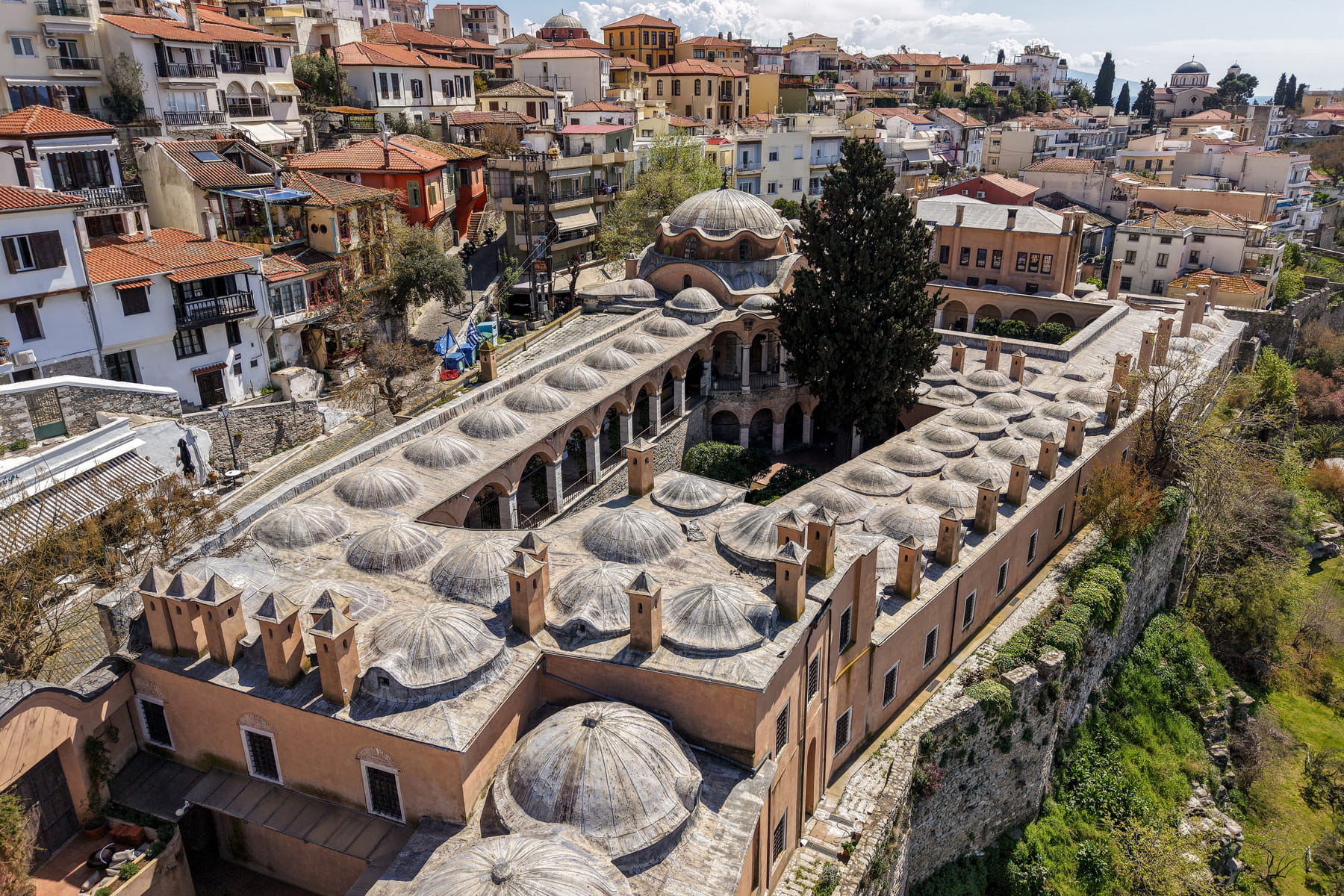
The Imaret is a late Ottoman architectural gem whose construction began in 1813. Once housing religious schools and a soup kitchen, today it operates as a luxury hotel.
The Kavala Imaret and Mohammed Ali Pasha
Dimitrios Kougioumtzoglou, a local archaeologist, says that Kavala’s rich history came long before the arrival of the Ottomans, starting with the landing of Saint Paul in 49 CE. From the eighth century CE, the new Byzantine name was Christoupolis, and the Ottoman conquest followed in the late 14th century.
Construction of the Imaret complex began in 1813, with the madrasa (a school of religious instruction), hammâm (bathhouse) and soup kitchen opening in 1820, the latter catering to all the poor people of Kavala regardless of religion or gender. “Imaret” comes from the Arabic word imāra, meaning “building” or “structure,” which in the Ottoman context became associated with public soup kitchens.
Though Ali Pasha left Kavala in his early 30s and would return only in later life, the town remained close to his heart. Kougioumtzoglou says that after his mother died during his birth, Ali Pasha was “given to a Greek Christian family in the village of Rahoni on the island of Thasos to raise him.”
It was something he probably never forgot, Kougioumtzoglou says, because “he always protected the Greek people of his birthplace, while at the same time he offered benefits to Greek merchants to come and work in Egypt.”
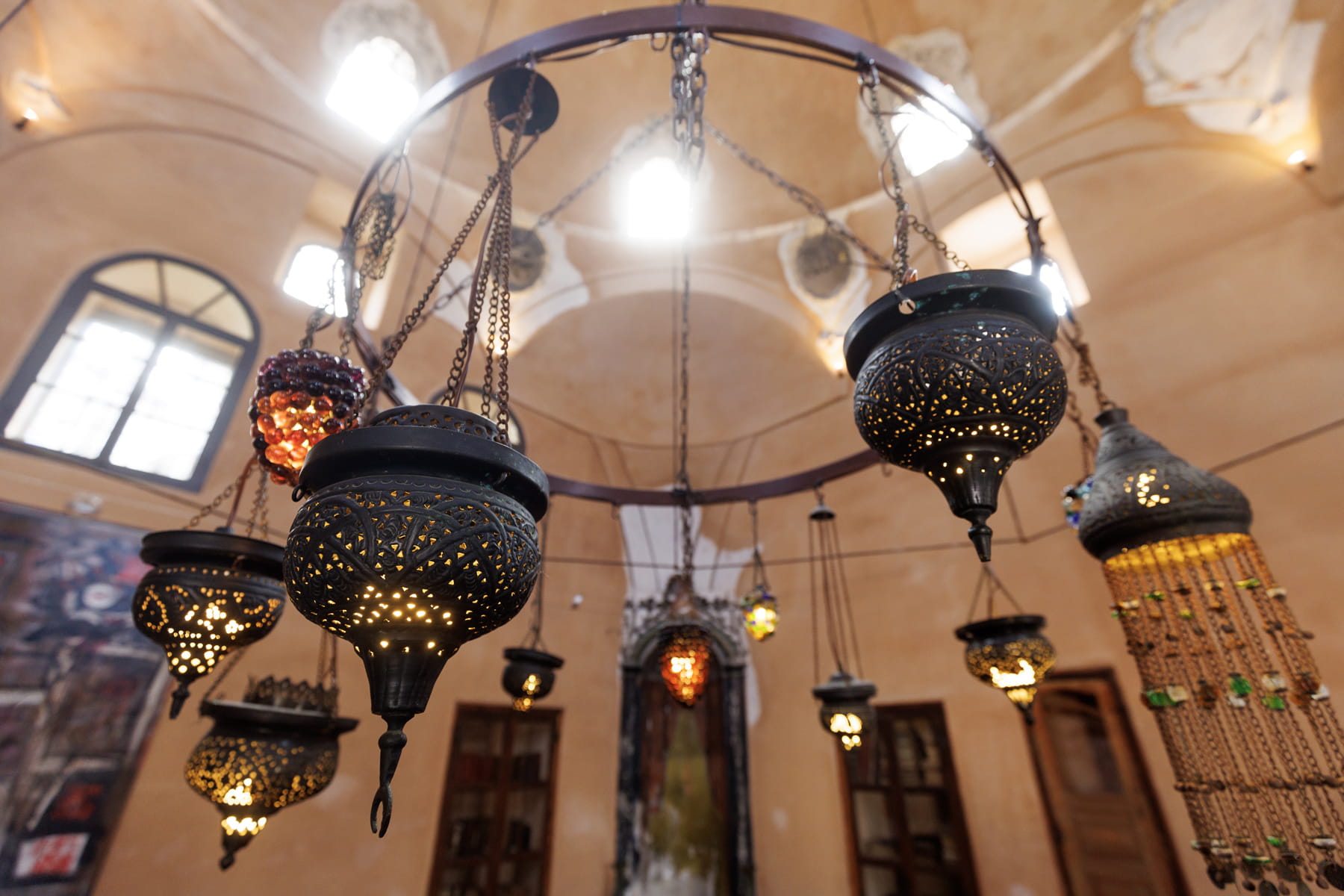
The main prayer room is bathed in natural and artificial light.
Professor Heath Lowry, author of Remembering One’s Roots: Mehmed Ali Paşa of Egypt’s Links to the Macedonian Town of Kavala, explains how Ali Pasha hailed from a poor family and worked as a runner for a French tobacco merchant. Lowry says his origins are somewhat a mystery, and mistaken assertions of Albanian descent can be attributed to his leadership of Albanian janissaries, or elite infantry units, in Egypt.
Instead, his true family origins “can be linked to Konya in Central Anatolia [in modern Türkiye],” he says; such families most likely were forcibly resettled around Kavala in the 16th century to give the region a Muslim population. The turning point was, according to Lowry, his marriage to a woman from “a very powerful family.”
“He gave the city what he had never had—educational institutions,” Lowry notes. At the same time, he rebuilt the 16th-century aqueduct to provide water to Imaret and Old Town.
Ismini Micha, a historian dedicated to Ali Pasha’s legacy, explains that the Imaret was heavily impacted by the 1923 Lausanne Convention governing the exchange of Greek and Turkish populations. “Most Muslims left, and Greek Christians were forced to come here,” Micha says, emphasizing how “it was painful for both sides.” By this point, almost no students of the Qur’an remained in Kavala, while “many Greek Christian families from Türkiye lived in the Imaret as there was not enough housing.” From a school and center of prayer, it was transformed into a place of refuge, she says.
After the final families left in 1970, the Imaret was almost completely neglected, used primarily as storage space for nearby restaurants.
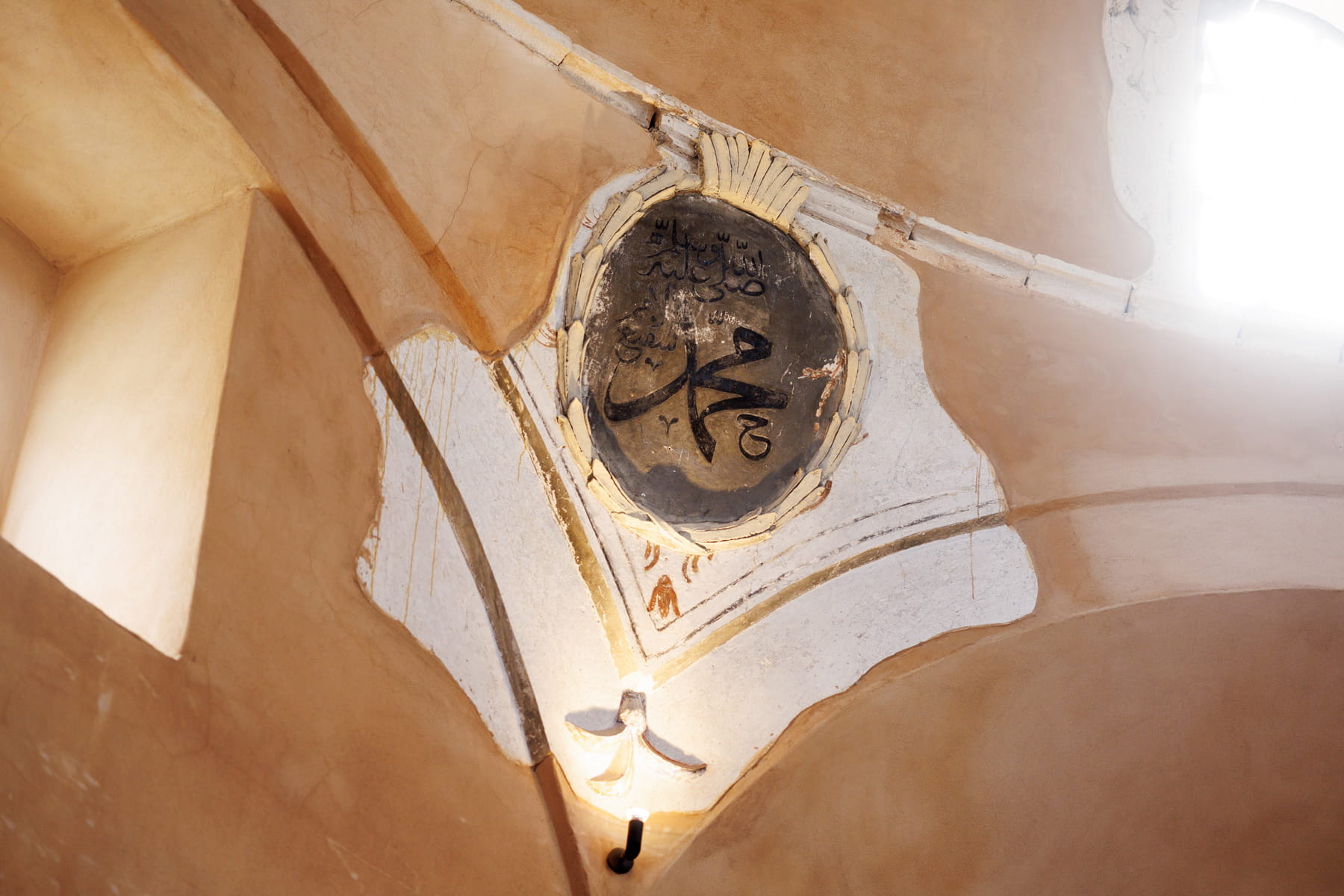
Architectural details are intricate and purposeful.
Reconstruction of Kavala Imaret and its presence today
In 1954, Greece declared the Imaret and Ali Pasha’s family house to be protected historical monuments, while recognizing them as Egyptian properties. Unfortunately, hoped-for investments to maintain the Imaret never materialized.
As time passed, the structural integrity of the Imaret grew compromised, and it faced imminent collapse.
“It is the most beautiful imaret constructed in the Ottoman Empire,” Missirian Tzouma, MOHA’s founder, says, “with an elegance, a grace—sometimes strict, sometimes playful.” She viewed its physical state as tragic.
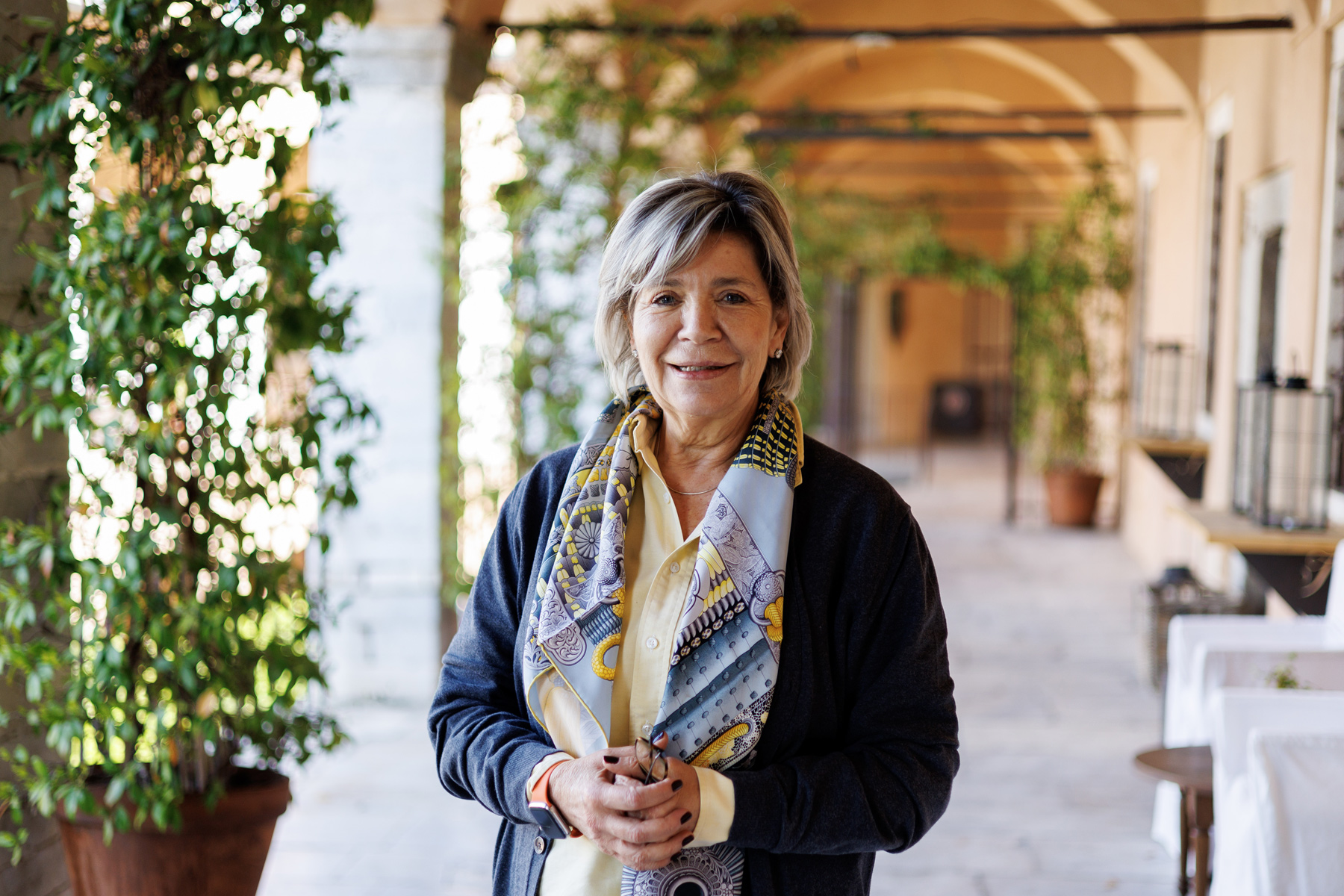
“It is the most beautiful imaret constructed in the Ottoman Empire, with an elegance, a grace—sometimes strict, sometimes playful,” says preservationist Anna Missirian Tzouma.
Additionally, by the 1990s most of its assets, including a rich library, had been stolen. No elected official dared contemplate the commitment of public money, as the cost of salvaging mounted with each passing year.
“It took me seven years to persuade the Egyptian government to let me reconstruct it,” Missirian Tzouma recalls. “I was going back and forth to Egypt every month,” she adds, before an agreement was finally reached.
Undeterred, Missirian Tzouma commissioned architectural designs and drew upon the studies of historians. During four painstaking years of reconstruction, long-forgotten building techniques were reinvigorated.
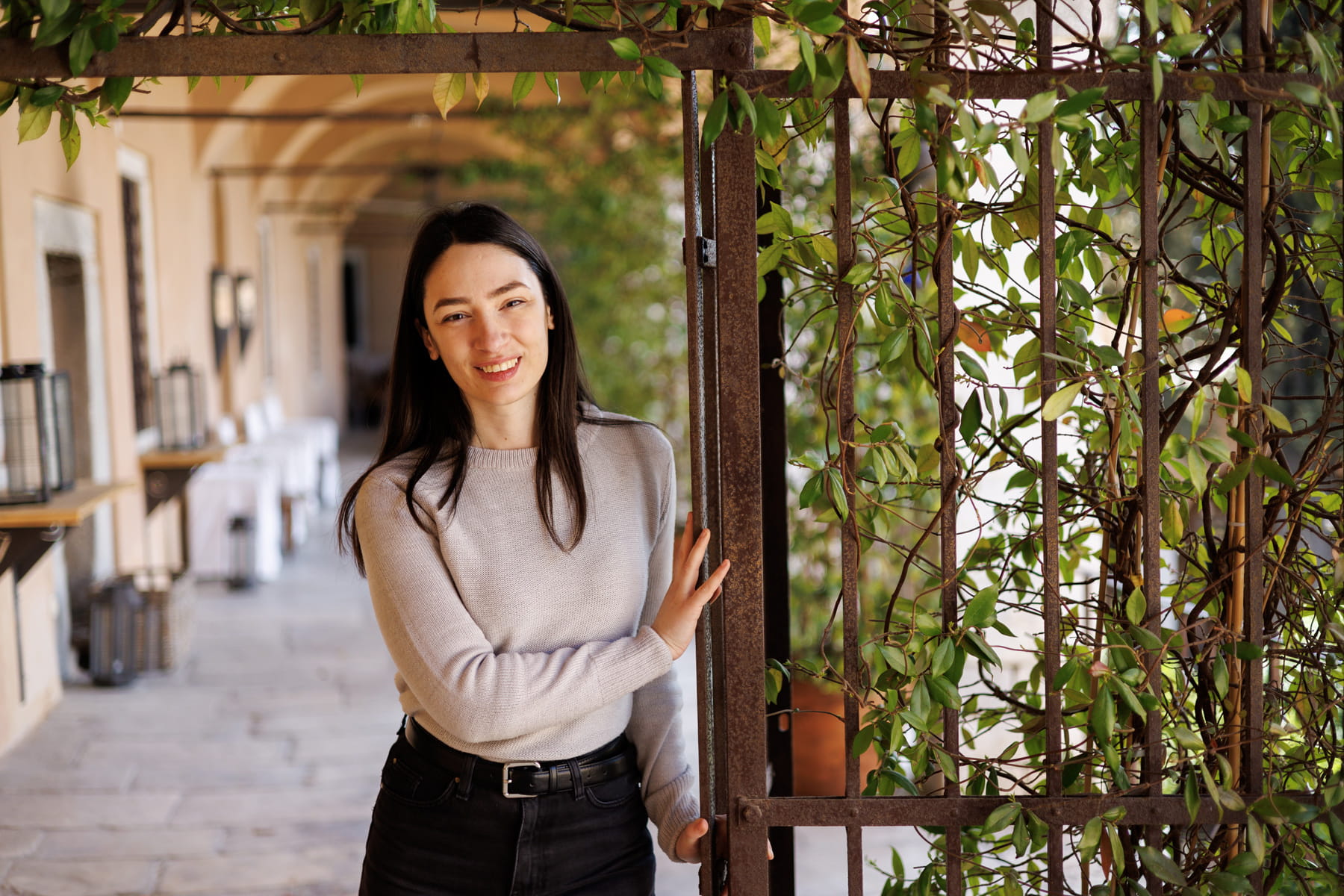
As the Imaret was restored in Kavala’s Old Town, “people began to see it as a unique building, as a little gem,” says historian Ismini Micha.
As Micha reminds, “the Imaret is not a typical architectural style—it is many different styles.” “There was a reason behind every small detail, a practical reason,” she continues. By listening carefully, they deciphered the path to authenticity, retaining as many original features as possible.
As the Imaret again shone from the hillside of the peninsula on which Kavala’s Old Town sits, so too did the perspectives of residents start to change. “People began to see it as a unique building, as a little gem,” Micha recalls.
Since its reopening in 2004, it has operated as a luxury hotel. This is now evolving. Today “the Imaret is not operated simply as a hotel, nor is it part of a tourism circuit,” Missirian Tzouma says. “It represents a new approach to hospitality—one that is rooted in preservation, research and cultural immersion.”
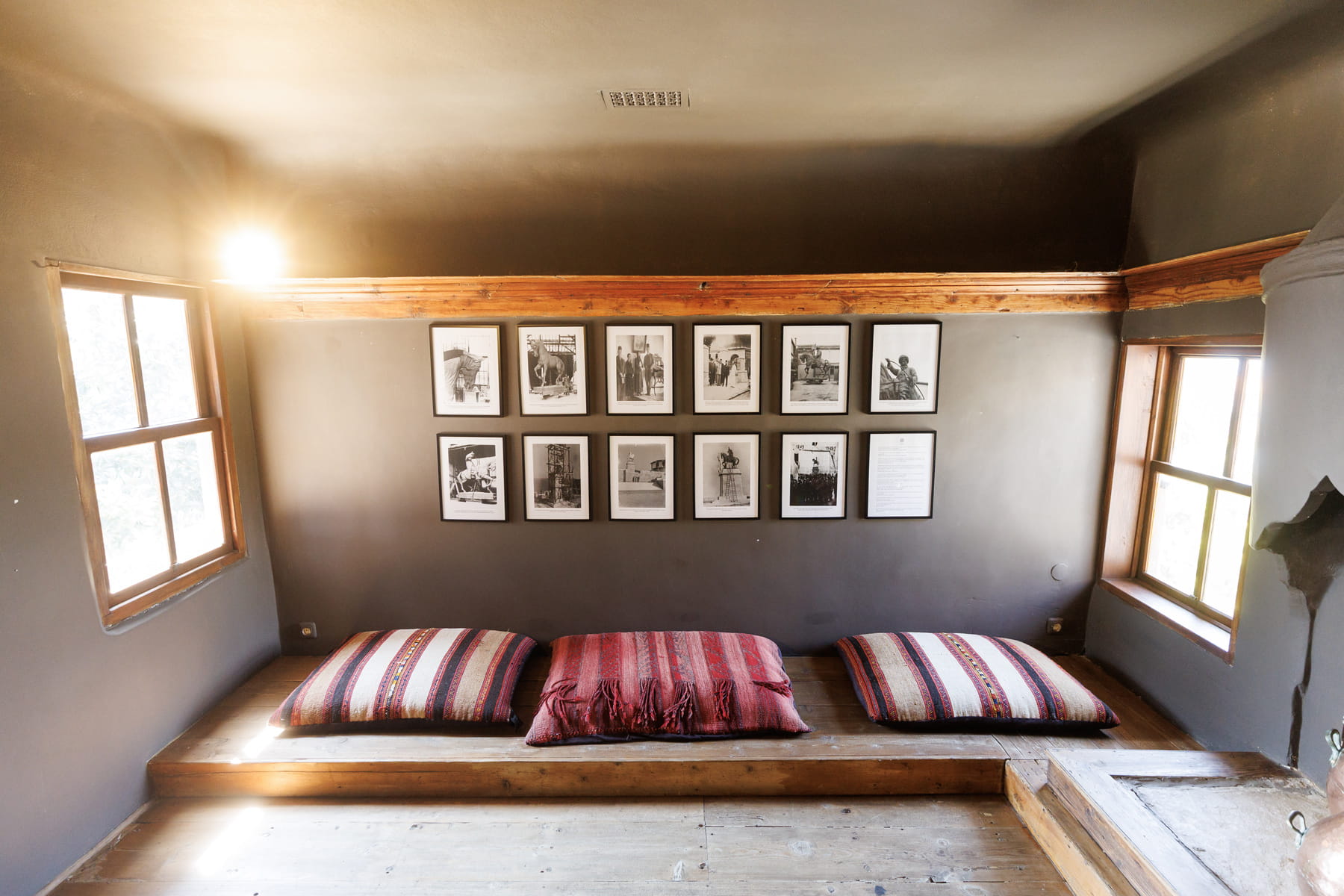
A museum dedicated to Ali Pasha complements the historical Imaret hotel.
Imaret’s additional purpose
The Imaret also supports local exhibitions, several of which have been housed in the former prayer room, which boasts original features, including Islamic calligraphy and Qur’anic verses on the walls, and the qibla wall in the direction of Makkah.
Vassiliki Zafiria Ypsilanti, founder of Mantility (meaning “the mentality of silk”), is one beneficiary. “We make works of art on silk in [the town of] Soufli, part of the ancient Silk Road,” she says—silk providing a blank canvas on which the designs of various painters and designers are printed. It is revitalizing a historical industry that was on the verge of extinction. Ypsilanti’s nearby concept store sits in the shadows of the grand aqueduct, Roman in origin but Ottoman in execution.

Tourists are drawn to the Ottoman heritage of Kavala’s Old Town.
Across the road from the Imaret, chef Konstandinos Tsollakou has made Kavala synonymous with kurabie (qurabiya in Arabic), a hard butter biscuit covered in icing sugar. “The classic is with almond, but I add cinnamon,” he says. As Turkish tourists drive demand, drawn by the town’s Ottoman heritage, new factories have shot up. “Here I make them handmade,” Tsollakou says proudly.
“Monuments are very fragile buildings,” Missirian Tzouma reflects. “We are constantly maintaining and restoring.” The historical and cultural contexts in which their meanings are processed and challenged are also vulnerable. As the seagulls steal the lead from the Imaret’s roof, other scavengers, like time, still threaten to take bites out of Ali Pasha and his legacy.
“The Imaret is a bridge between worlds,” Missirian Tzouma insists, and thanks to her efforts, it will remain so for some time to come.
About the Author

Armin Durgut
Armin Durgut is a freelance photojournalist and a documentary photographer. He is a regular contributor to Associated Press news agency and other publications. His book and an exhibition, “Mrtvare,” poignantly documents the footwear of the Srebrenica genocide victims, and his work often highlights significant historical and social issues.
Ian Bancroft
Ian Bancroft is a writer and former diplomat based in the former Yugoslavia. He is the author of a novel, Luka, and a work of nonfiction, Dragon’s Teeth: Tales From North Kosovo.
You may also be interested in...
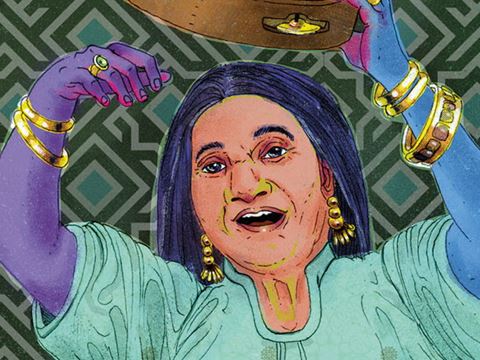
Cheikha Remitti: The Voice of Rai Music In Algeria
Arts
Culture
Born in a village in northwest Algeria, Cheika Remitti sang high-energy songs of love, loss and society that pioneered rai music. Beloved by fans for more than 60 years until her death in 2006, her influence and popularity endure.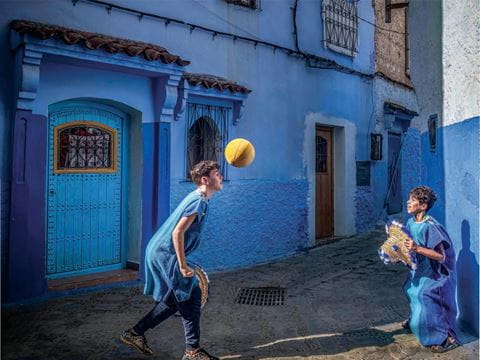
2026 AramcoWorld Calendar - Football Is Life
Culture
In urban centers and tiny villages, amid plains, deserts, forests, rainforests, coastal areas and any other habitat on our spinning sphere, football found a formidable foothold.
Sisters Behind HUR Jewelry Aim To Honor Pakistani Traditions
Arts
Culture
What began with a handmade pair of earrings exchanged between sisters in 2017 has evolved into a jewelry brand with pieces worn in more than 50 countries.